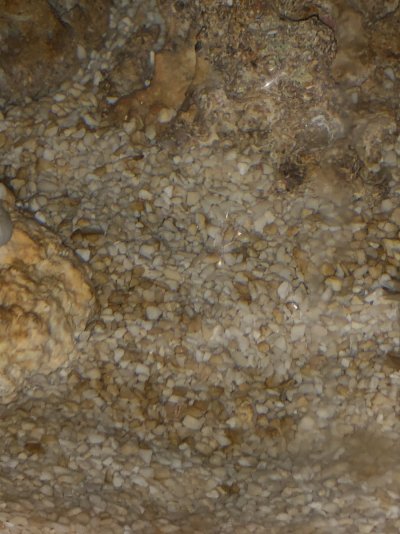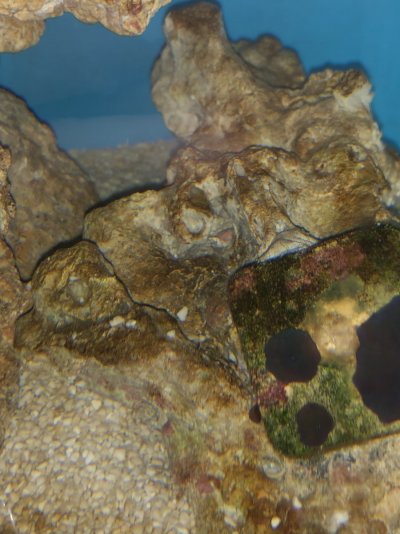Navigation
Install the app
How to install the app on iOS
Follow along with the video below to see how to install our site as a web app on your home screen.
Note: This feature may not be available in some browsers.
More options
You are using an out of date browser. It may not display this or other websites correctly.
You should upgrade or use an alternative browser.
You should upgrade or use an alternative browser.
Is this brown algae or dinos?
- Thread starter alyrchd
- Start date
- Tagged users None
it’s around 3-4 months old. I just recently changed to a proper lighting, don’t know if it’s because of thatDid you just start this tank up?
Upvote
0
I agree with ^^. The new lighting is doing that. It will fizzle out once the tank stabilized. Although I’m curious why you can detect ammonia after 3-4 months. Have you added bacteria?
Upvote
0
I did but i guess it wasn’t enough. Is it ok to add some more now?I agree with ^^. The new lighting is doing that. It will fizzle out once the tank stabilized. Although I’m curious why you can detect ammonia after 3-4 months. Have you added bacteria?
Upvote
0
I would wait a week or two and just see how it plays out. If you’re still detecting ammonia, then I would add some microbacter7 or Dr Tim’s One and Only. Be sure to dose according to the product instructions.
Upvote
0
Today i noticed some bubbles coming out of brown patches. Is it still possible to be just diatoms?Looks like diatoms to me. Part of the early stages of tank maturity. Will pass with time
Upvote
0
Hi. The same thing is happening to my 45 gallon aquarium, the sand and rocks are turning brown. Have you found any solution to this problem?
Upvote
0
Still looks brown but i’m pretty sure it’s diatoms so it’s harmless and will go away on its own, but i bought some bacteria yesterday so it improves faster. If you want to differentiate between diatoms and dinoflagellates, the person that i buy corals from - that had dinos in the past - told me to “blow” water near the brown patches to see if it disperses easily or not and if it doesn’t work, try to rub it with your finger or a brush, wait a few minutes to see if it turns brown again or not. If it turns brown again in a couple of minutes it’s probably dinoflagellates but if it doesn’t it’s probably just diatoms. I waited 10 minutes and it didn’t turn brown again so he told me that i should wait for the problem to go away on its own since diatoms are harmless.Hi. The same thing is happening to my 45 gallon aquarium, the sand and rocks are turning brown. Have you found any solution to this problem?
If you have dinos, i heard a UV sterilizer is a great way to deal with them, though not all types of dinos can be killed by it, the worst one and to my knowledge the only toxic one - ostreopsis - can.
I was worried i had dinos because i saw some bubbles rising but i read that brown algae can produce oxygen bubbles too.
Upvote
0
Hi. The same thing is happening to my 45 gallon aquarium, the sand and rocks are turning brown. Have you found any solution to this problem?
what worries me is that my white anemone that is located in the bottom and some corals also have brown spots alreadyStill looks brown but i’m pretty sure it’s diatoms so it’s harmless and will go away on its own, but i bought some bacteria yesterday so it improves faster. If you want to differentiate between diatoms and dinoflagellates, the person that i buy corals from - that had dinos in the past - told me to “blow” water near the brown patches to see if it disperses easily or not and if it doesn’t work, try to rub it with your finger or a brush, wait a few minutes to see if it turns brown again or not. If it turns brown again in a couple of minutes it’s probably dinoflagellates but if it doesn’t it’s probably just diatoms. I waited 10 minutes and it didn’t turn brown again so he told me that i should wait for the problem to go away on its own since diatoms are harmless.
If you have dinos, i heard a UV sterilizer is a great way to deal with them, though not all types of dinos can be killed by it, the worst one and to my knowledge the only toxic one - ostreopsis - can.
I was worried i had dinos because i saw some bubbles rising but i read that brown algae can produce oxygen bubbles too.
Upvote
0
If it gets bad, you can do a blackout for 3 days. I suggest you google about it so you do it right but it helps for surewhat worries me is that my white anemone that is located in the bottom and some corals also have brown spots already
Upvote
0
what worries me is that my white anemone that is located in the bottom and some corals also have brown spots already
Just to update you: i added microbe lift special blend once 2 days ago and it’s almost all gone today. I bought this one cause it was the only one available at the store and it was quite cheap too - compared to other bacterias i saw online
Upvote
0
likely diatoms yes, they are eating the silicates from the dry rock.Still looks brown but i’m pretty sure it’s diatoms so it’s harmless and will go away on its own, but i bought some bacteria yesterday so it improves faster. If you want to differentiate between diatoms and dinoflagellates, the person that i buy corals from - that had dinos in the past - told me to “blow” water near the brown patches to see if it disperses easily or not and if it doesn’t work, try to rub it with your finger or a brush, wait a few minutes to see if it turns brown again or not. If it turns brown again in a couple of minutes it’s probably dinoflagellates but if it doesn’t it’s probably just diatoms. I waited 10 minutes and it didn’t turn brown again so he told me that i should wait for the problem to go away on its own since diatoms are harmless.
If you have dinos, i heard a UV sterilizer is a great way to deal with them, though not all types of dinos can be killed by it, the worst one and to my knowledge the only toxic one - ostreopsis - can.
I was worried i had dinos because i saw some bubbles rising but i read that brown algae can produce oxygen bubbles too.
mutliple dinos are toxic, only some enter a free swimming stage can can be killed by UV though.
Upvote
0
ohh thanks!!likely diatoms yes, they are eating the silicates from the dry rock.
mutliple dinos are toxic, only some enter a free swimming stage can can be killed by UV though.
Upvote
0
what kind of nem is it? nearly no healthy nems are white.what worries me is that my white anemone that is located in the bottom and some corals also have brown spots already
Flow might be too low on corals.
Upvote
0
Similar threads
- Replies
- 4
- Views
- 164




















